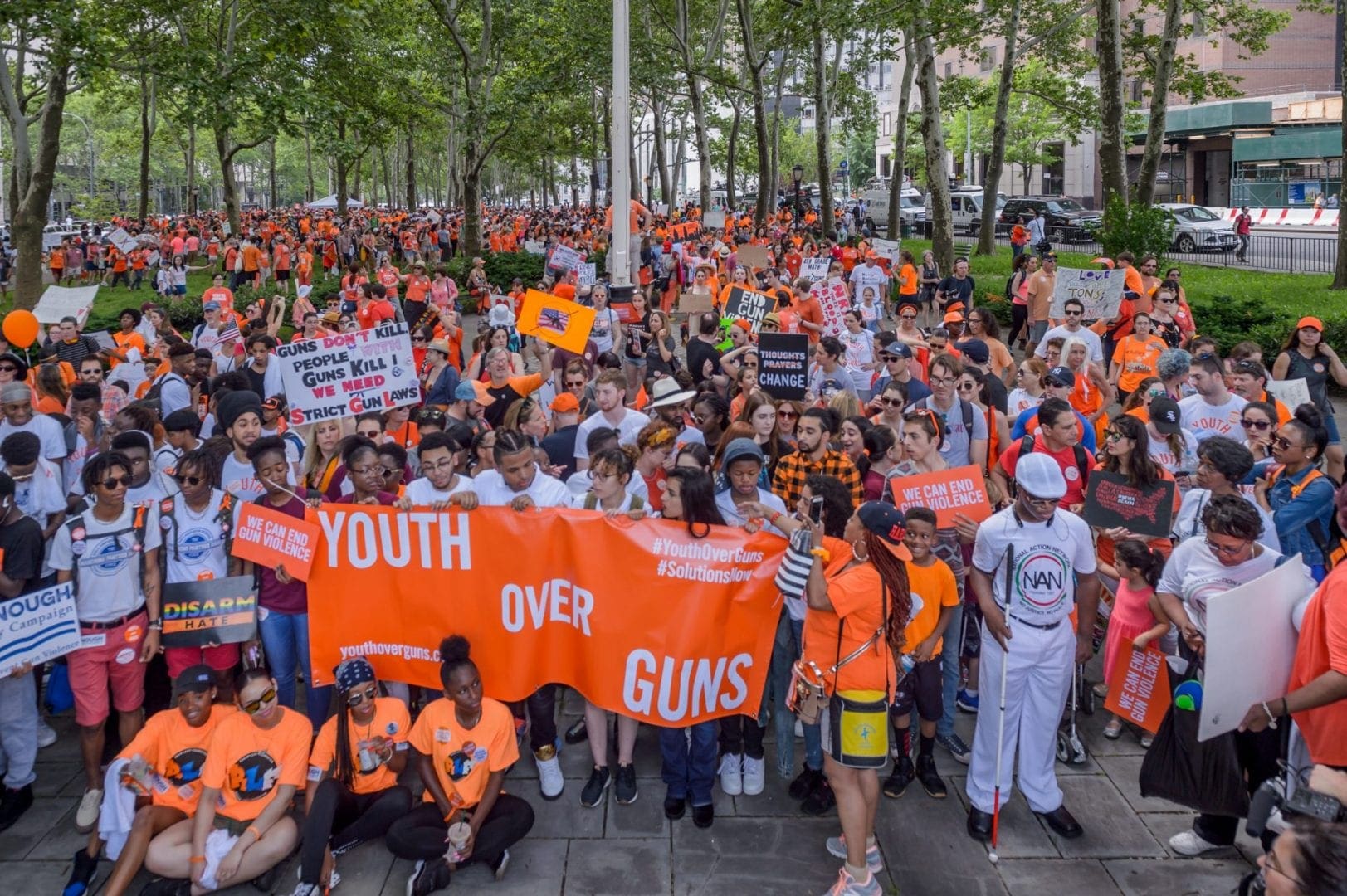Amnesty International USA (AIUSA) commends Senator Booker and Representative Horsford. Their call must be heard and responded to by President Biden, Congress, and state and city leaders. The bill includes measures AIUSA has long advocated for and will provide sustained funding for lifesaving programs run by leaders with lived experience in communities most impacted by gun violence.
In a new policy briefing, “From Pain to Progress: Confronting the Struggle on the Front Lines of America’s Gun Violence Crisis,” AIUSA lays out how centering investment in community violence intervention programs can be a key way to curb gun violence across the country.
“Reintroducing the Break the Cycle of Violence Act, and signing it into law, will give local heroes and the programs they run to reduce gun violence the financial support that’s been missing for far too long,” said Ernest Coverson, Amnesty International USA’s End Gun Violence Campaign Manager. According to a study by physicians and researchers featured in the American College of Surgeons Journal, gun violence costs the U.S. healthcare system $170 billion per year. The Health Alliance for Violence Intervention concluded that it would cost an estimated $670 million per year — $5.36 billion over eight years — to fund sustained and adequate violence intervention programs in the 48 U.S. cities with the highest rates of violence.
“Senator Booker and Representative Horsford’s introduction of this critical measure offers Congress an opportunity to make fundamental changes in how the United States addresses gun violence and to make our communities safe. We can do better, we will do better, and this is just the first step in reimagining a country that is safe for all,” said Coverson.
AIUSA and community organization partners in the “Invest In Us” coalition have long pushed for legislation which would support funding and implementation of evidence-based violence prevention and intervention programs, with at least $5 billion over the next eight years in federal funding for local community gun violence prevention programs.
“Local intervention programs like BRAVE save lives,” said Lamar Johnson Jr., Violence Prevention Coordinator of the BRAVE Youth Leaders in Chicago, IL. “It gives kids in the inner city a platform and humanizes them. Gun violence is inherently linked to human rights, because as a human being you deserve respect and to be seen. Anything that creates trauma, abuse and inequity is a human rights issue — and gun violence does that. It touches everyone.” Evidence-based violence intervention and prevention programs have been successful in some of the hardest hit cities in the U.S. In Boston, Operation Ceasefire reduced youth homicides by 61% when it was first introduced in the 1990s. More recently, the Cure Violence model reduced homicides by 38% in Chicago in targeted districts compared to districts that did not receive the intervention. Similar programs have helped stem the tide of violence in Philadelphia, Oakland, California; New Haven, Connecticut; and New York City. As gun violence rates continue to rise, only eight U.S. states have passed measures to support evidence-based violence prevention and intervention programs.
Gun violence remains a uniquely American issue that continues to undermine and threaten the human rights of everyone living in this country. Gun homicides in the U.S. disproportionately impact Black and brown communities, with African American men being ten times more likely to be the victims than white American men. Gun homicides are also the leading cause of death among Black men and boys ages 15–34, and the third-leading cause of death for Hispanic men in the same age range.
Children and youth contextualize the United States’ gun violence in particularly horrific, and what should be unacceptable, terms. Killing an average of 109 people each day, gun violence is the third leading cause of death among U.S. youth ages 15-24 and the fourth leading cause of death for children ages 10-14. “Black and brown children and teens are disproportionately impacted by shootings nationwide,” said Jasmeet Sidhu, AIUSA’s lead gun violence researcher. “Survivors, family members and witnesses to gun violence carry devastating, long-lasting trauma, not to mention the short- and long-term health care costs of treatment. We should be investing in communities and trying to break the cycle of violence, rather than over-policing communities in crisis. The legacy of gun violence in the United States is not one our youth should have to carry forward.”
Noting the budgeting disparity and failure to invest in proven solutions, Coverson said, “We fund policing, but we don’t fund gun violence prevention programs and the heroes that run them. According to the Vera Institute, we spend over a hundred billion dollars a year on policing in the United States, yet gun violence is worse than ever. To end this cycle of gun violence, we first have to recognize it for what it is: a national human rights crisis. Only then will our government do what’s right and invest in our future by funding community gun violence prevention programs.”
The Break the Cycle Act would help reduce gun violence by:
- Propose to authorize $6.5 billion over 8 years to invest in effective community-based violence intervention programs and provide jobs to youth between the ages of 16-24;
- Propose to authorize $5 billion over 8 years for a competitive grant program to community-based organizations and local units of government that develop effective, prevention-oriented violence reduction initiatives focused on young people at high risk for violence; and
- Propose to authorize $1.5 billion over eight years for the Improving Approaches for Communities to Thrive (IMPACT) grant for eligible organizations and units of local government to provide job training, education, apprenticeship, skilled trades training, or other paid and unpaid work experiences for youth in communities disproportionately affected by gun violence.

